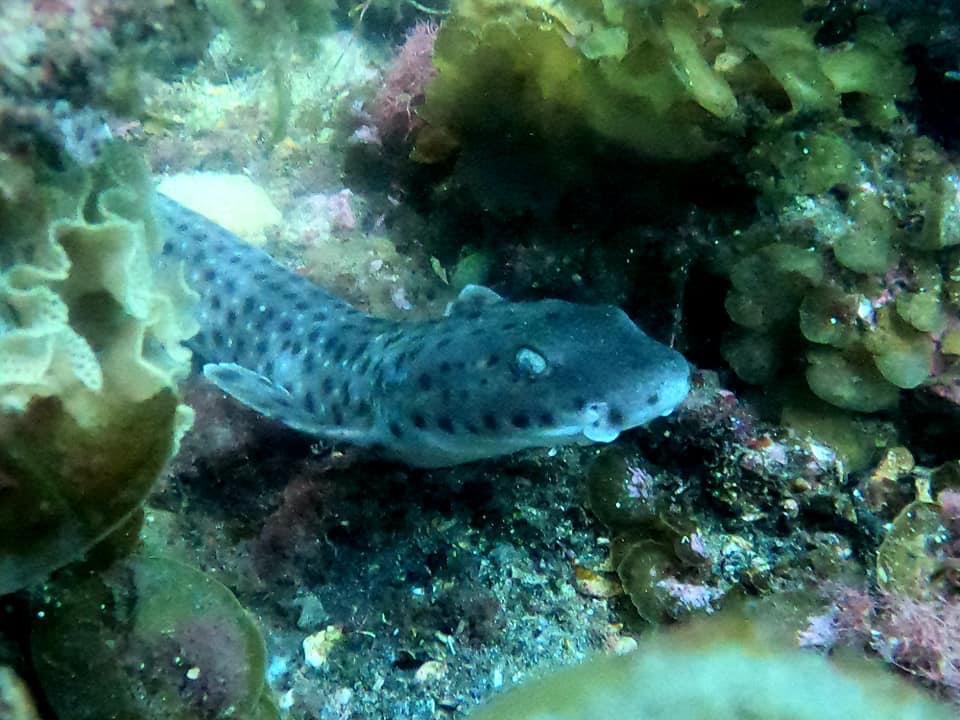Varied Catshark
Parascyllium variolatum
The varied catshark is one of four endemic species in the family Parascylliidae, the collared catsharks, a small family of benthic sharks with small heads, a sinuous body, two spineless dorsal fins and nasal barbells near the corners of the mouth. They resemble true catsharks but differ by having distinct nasal barbells, a groove joining the nostrils to the mouth and the mouth not reaching to below eyes. The varied catshark can be identified by its long, snake-like body variable in colouration from pale grey to dark brown with distinct dark bands and large white spots covering the body. A characteristic black “collar” lies behind the gills and is covered in smaller white spots. This species has small oval eyes and two similar sized dorsal fins. The varied catshark grow to a maximum length of 92 centimetres.
The varied catshark occurs in a variety of temperate inshore water habitats, including sandy bottoms, rocky reefs, in kelp beds and in seagrass beds to depths of 180 metres. This species is endemic to Australia and is found from Dongara, WA to remaining concealed during the day in reef crevices and hunt nocturnally for benthic invertebrates and small fishes. Very little is known about the biology of the varied catshark, but the species is oviparous.
Other common names include: Necklace carpet shark, ring-necked catshark, southern catshark and varied carpet shark
Occurrence at the Busselton Jetty:
The varied catshark is rarely observed from the underwater observatory. A cryptic species they tend to be common in amongst seagrass and concealed in crevices, however they have been spotted moving from one place to another.
Image by: S. Daniels
